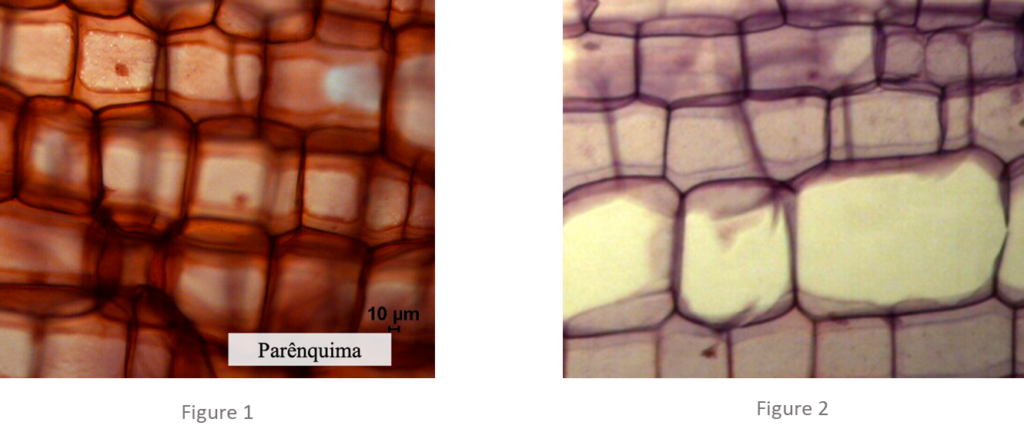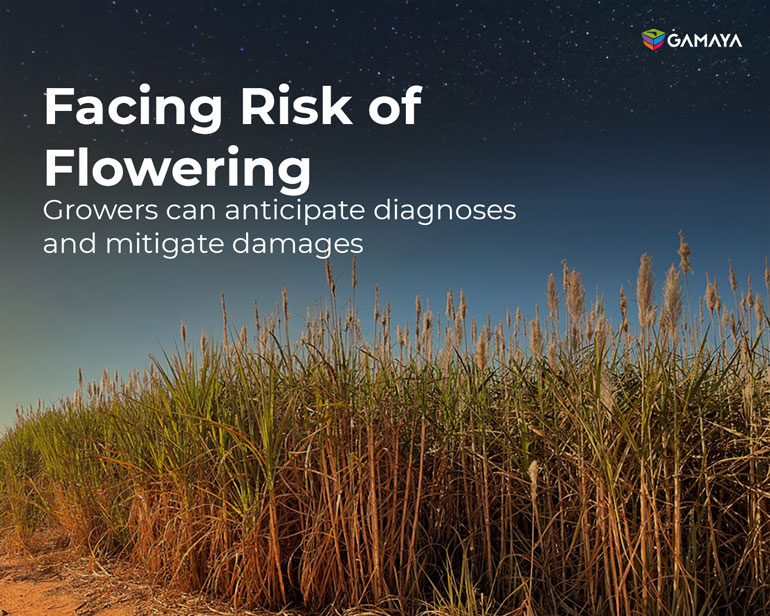The production of sugarcane has been driving the Brazilian economy for over 500 years, currently responsible for 2% of the GDP. Such responsibility comes with many challenges, and one of the most significant problems for sugarcane production is flowering. In this article, we will explore why flowering deserves proper attention, our vision for this topic in 2023, how climate change will create more challenges in the future, and how GAMAYA has prepared a new tool that can help to decide in this volatile environment.
Examining the risks of Flowering and Isoporization. What are the predictions for 2023?
Flowering is a natural process that occurs in sugarcane when the plant encounters favourable conditions to initiate the process between mid-February to mid-March. The main factors for this process include photoperiod (day length), soil moisture, and temperature. However, when sugarcane plants flower, they spend the accumulated energy in the form of sucrose to emit the floral stem, leading to the isoporization inside the stem. This can significantly reduce the yield of sugarcane crops and, in some cases, result in losses of up to 30% in both yield and sugar content.
In 2023, a risk of flowering and isoporization in sugarcane fields was detected. Our estimate aligns with the opinion shared by Professor Dr. Paulo de Figueiredo (UNESP/Dracena), presented at the Canaplan event held on the last Thursday of April, the 27th. The application of an inhibitor was likely a tool used in those flowering varieties to prevent losses. Another strategy that can be adopted is to anticipate the harvest in those areas that were planned to be removed from the field towards the end of the crop season by using ripeners. According to Figueiredo, the risk for 2023 will be diffuse flowering, meaning the emission of floral spikes may not necessarily occur as intensely in various regions, but the damage can be “silent” due to the process of isoporization that typically worsens with the flowering.

Source: Presentation by Professor Paulo Figueiredo held at the Canaplan meeting (April 2023)
The image shows the dehydration of the stem tissues (Figure 2), which turn white compared to the healthy tissue (Figure 1) due to water loss after the sugarcane undergoes the process of isoporization.
Increasing Threat: Flowering and Isoporization Risks Exacerbated by Climate Change
Climate change is also expected to create more challenges for sugarcane production in the future. Rising temperatures and changes in rainfall patterns can make it harder to grow sugarcane and can also increase the risk of flowering. We must be vigilant in seeking to minimise the damage caused by these changes, using new digital tools to support decision-making.
“Flowering is something natural for the sugarcane plant, from a productive point of view it is undesirable, since this natural phenomenon consumes the plant’s reserves. Genetic improvement has been working to reduce or inhibit this process, a fact that currently the varieties bloom depending on climatic favorability, so we must evaluate the information to decide whether to apply inhibitors or not. The difficulty is that the induction occurs in mid-February, a period in which we must act, and the flowering actually occurs from May, when losses will already occur.” mention from José Eduardo Melli – Agricultural Planning and Development Coordinator at Sugarcane Mill Itajobi
According to the current scenario, GAMAYA has a tool available that can help sugarcane farmers make better decisions. Tested in 2023 in partnership with some important multinational companies in the sugarcane sector, this tool uses satellite images and machine learning algorithms to monitor the health of sugarcane plants and predict the risk of flowering. With this information, mills and producers can make decisions using mathematical models that consider various factors about when to harvest their crops and how to manage them preventively to mitigate the damage caused by the flowering and isoporization processes.
Gamaya’s Innovative Tool for Flowering and Isoporization Risk Analysis
In summary, the problem of flowering in sugarcane production is a significant risk and deserves attention. However, with the tool developed by GAMAYA, farmers can make better decisions and manage their crops more effectively.
“Gamaya’s artificial intelligence has been helping us with this crossing of information, taking into account all the climate data and the conditions of the sugarcane fields, improving assertiveness to really apply where it will flourish (or very likely) and be rational about the consumption of inputs. ” José Eduardo Melli – Itajobi
This is our goal: to enable more sustainable productions through the use of mathematical models and artificial intelligence.
We are available to present this and other solutions developed by sector experts to optimise your resources. Count on us, let’s face this challenge together!






